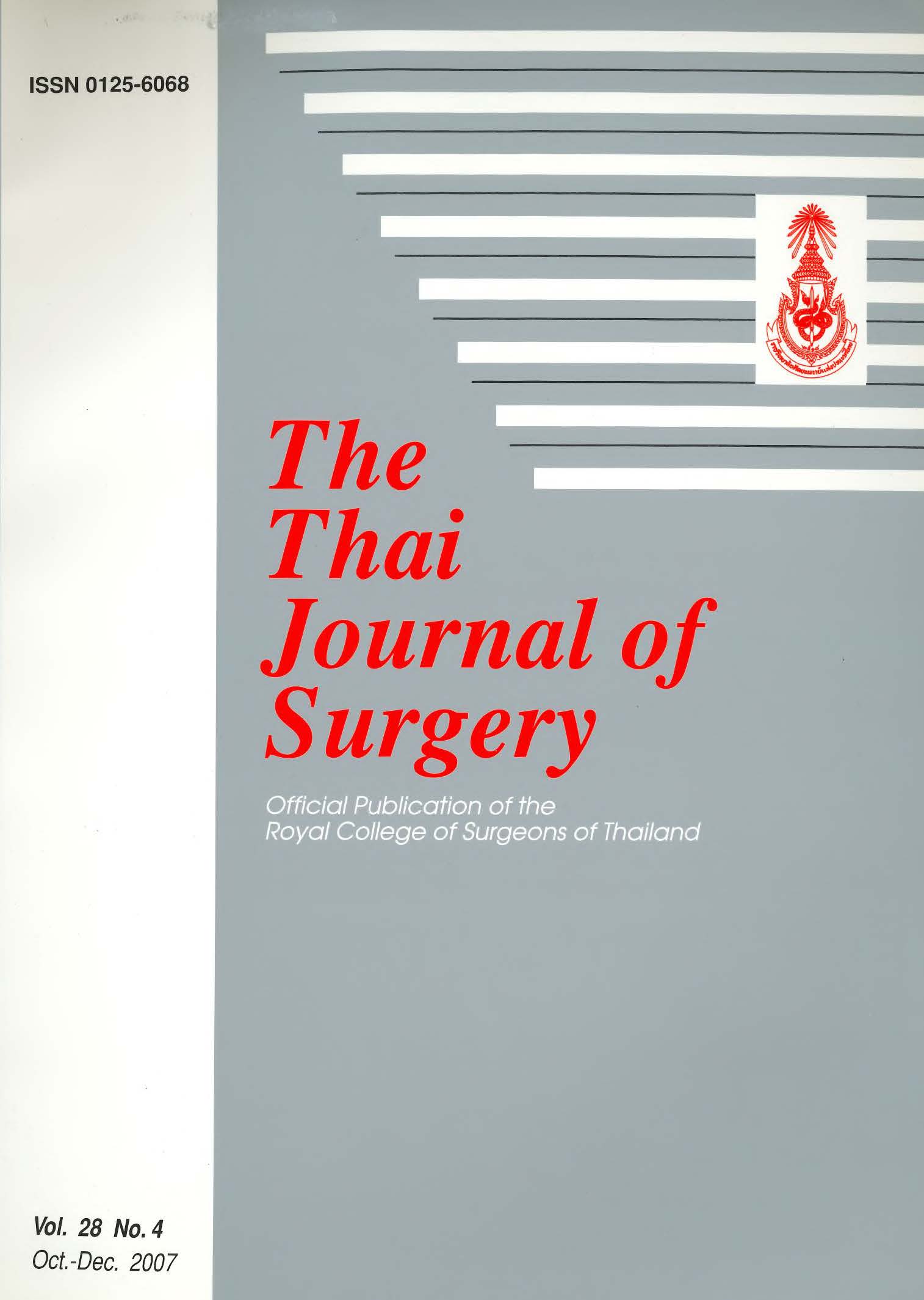Increased Urinary Excretions of Oxidative Stress Biomarkers and Sialic Acid Associated with Severity of Bladder Tumors
Abstract
Introduction: Reactive oxygen species-induced damage to lipids, proteins and DNA plays a major role in carcinogenesis. This study aimed to measure urinary excretions of 8-hydroxydeoxyguanosine (8-0HdG), malondialdehyde (MDA) and total sialic acid (TSA) in patients with bladder tumor and to determine whether their excretory levels were associated with severity of the tumors.
Materials and Methods: Morning urine samples were collected from 48 patients with bladder tumor and 30 healthy subjects. Concentration of creatinine, proteins, 8-OHdG, MDA and TSA were measured in the urine samples. The severity of transitional cell carcinoma of the bladder (TCC) was assessed by urine cytology (grading C1 to C5). The bladder tumor patients were classified into 2 groups, patients with negative urinary malignant cells (C1 and C2; n = 28) and those with positive urinary malignant cells (C3 to C5; n= 20).
Results: Levels of urinary proteins, 8-OHdG, MDA and TSA in patients with bladder tumor were significantly higher than in heal thy controls (p = 0.002, p = 0.009, p <0.001 and p <0.001, respectively). Urinary proteins, 8-OHdG, MDA and TSA levels in patients with C3 to C5 tumors were significantly higher than in those with C1 and C2 tumors (p = 0.043, p = 0.007, p = 0.024 and p = 0.018, respectively). In addition, urinary TSA levels in patients with C1 and C2 tumors were significantly higher than in healthy controls (p = 0.004).
Conclusions: The present study showed that urinary excretions of oxidative stress biomakers and TSA were significantly higher in bladder tumor patients and their levels correlated with the severity of the tumor. These noninvasive determinations may be clinically useful for diagnosing, prognosing and monitoring bladder cancer. Reduction of oxidative stress is recommended for primary prevention of bladder tumor.
References
2. Akcay T, Kanukoghu D, Erosenci A, et al: Urinary excretion of sialic acid in patients with superficial bladder tumors. Cancer Lett 1994:78:7.
3. Chiuan-Chian Chion, Pi-Yuch Chang, Err-Cheng Chan, et al. Urinary 8-hydroxydeoxyguanosine and its analogs as DINA marker of oxidative stress: development of an ELISA and measurement in both bladder and prostate cancer. Clinica Chimica
Acta 2003: 334: 87.
4. Gackowski D, Rozalk R, Rafal R, Jawien A, et al. 8-oxa-7, 8-dihydroguanosine and 8-oxa-7, 8-dihydro-2'-deoxyguanosine levels in human urine do not depend on diet. Free Radical Research 2001; 35:825.
5. Poulsen HE, Prieme H, Loft S. Role of oxidative DNA damage in cancer initiation and promotion. Eur J Cancer Prev 1998;7:9.
6. Yalcin O, Karatas F, et al. The levels of glutathione peroxidase, Vit A, E, C and lipid peroxidation in patients with transitional cell carcinoma of bladder. BJU International 2004; 93: 863.
Downloads
Published
How to Cite
Issue
Section
License
Articles must be contributed solely to The Thai Journal of Surgery and when published become the property of the Royal College of Surgeons of Thailand. The Royal College of Surgeons of Thailand reserves copyright on all published materials and such materials may not be reproduced in any form without the written permission.



